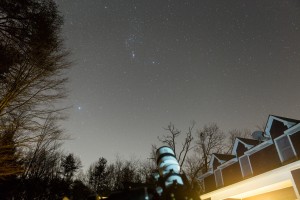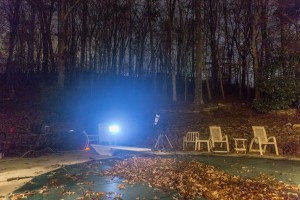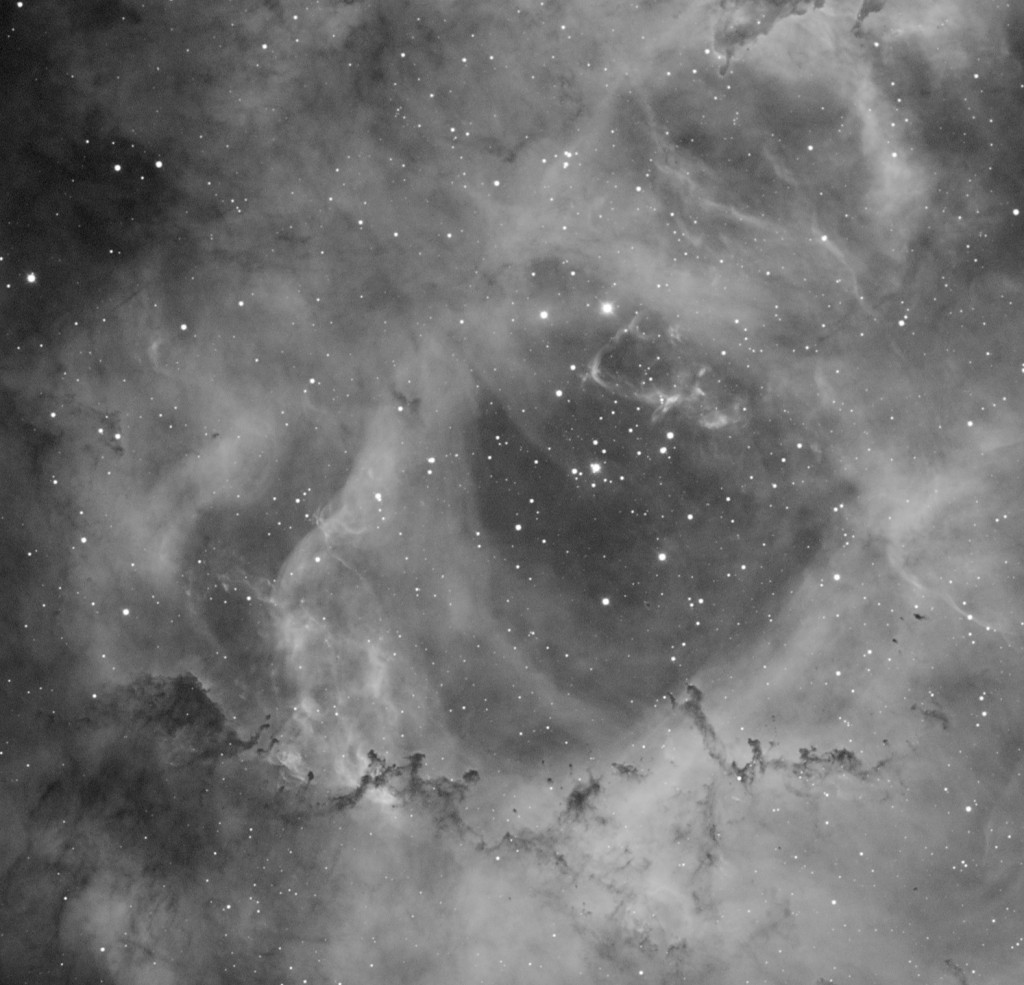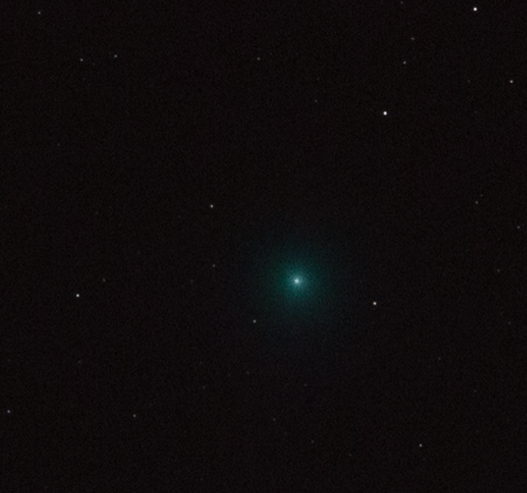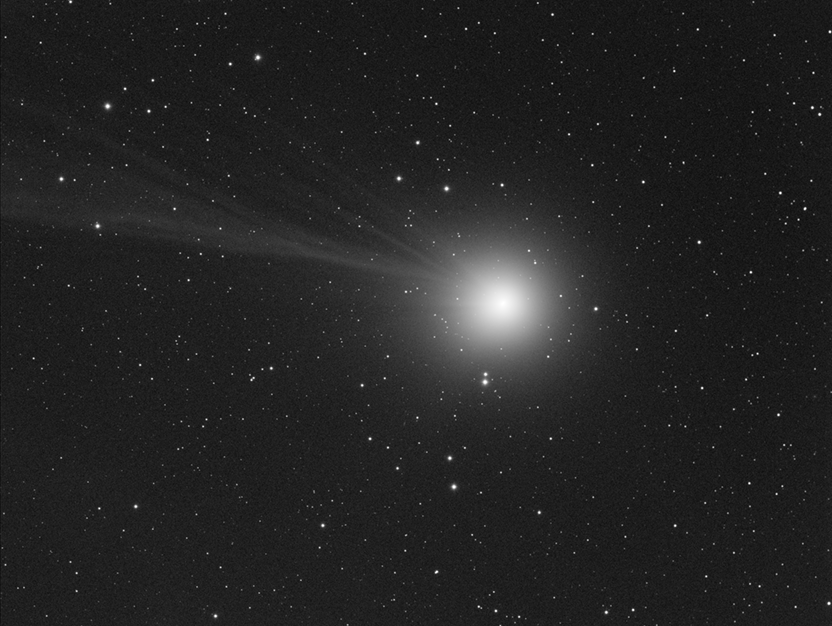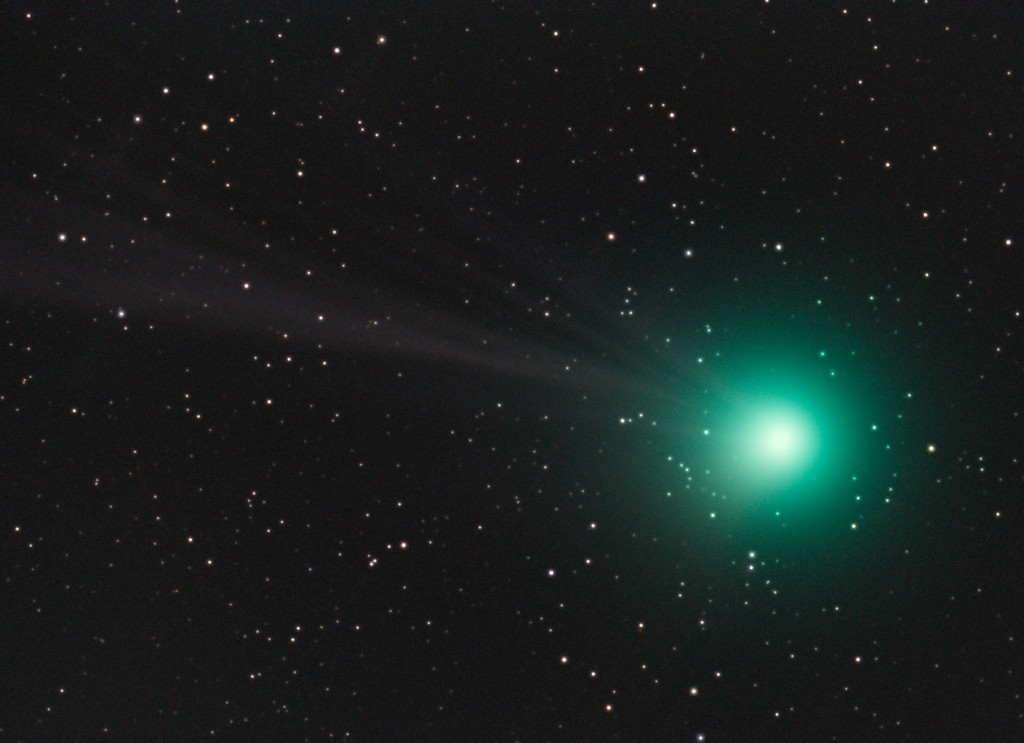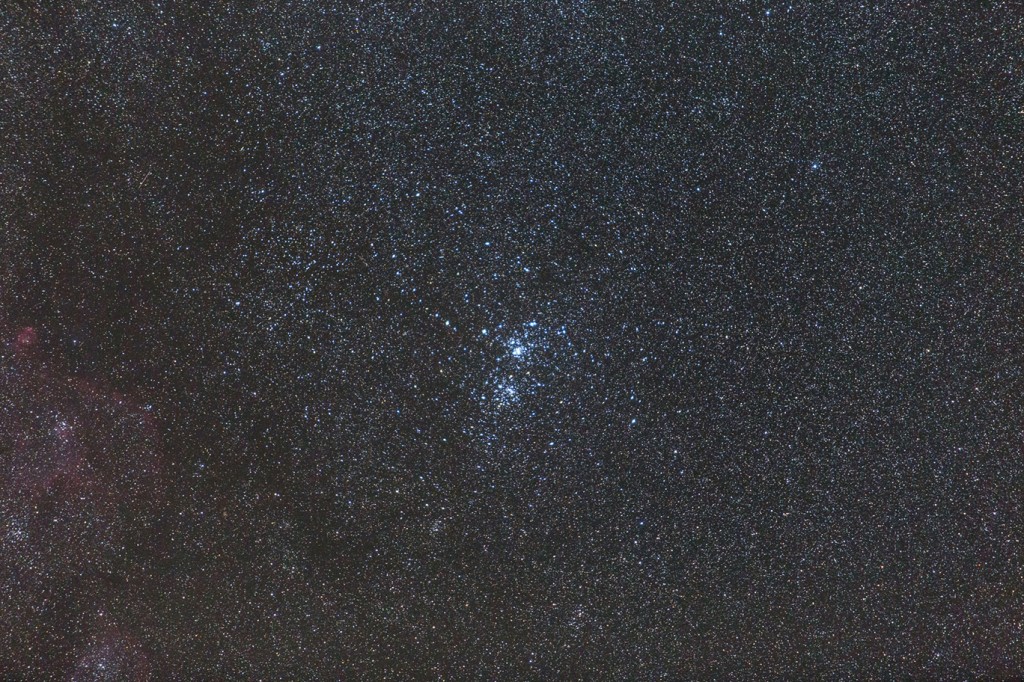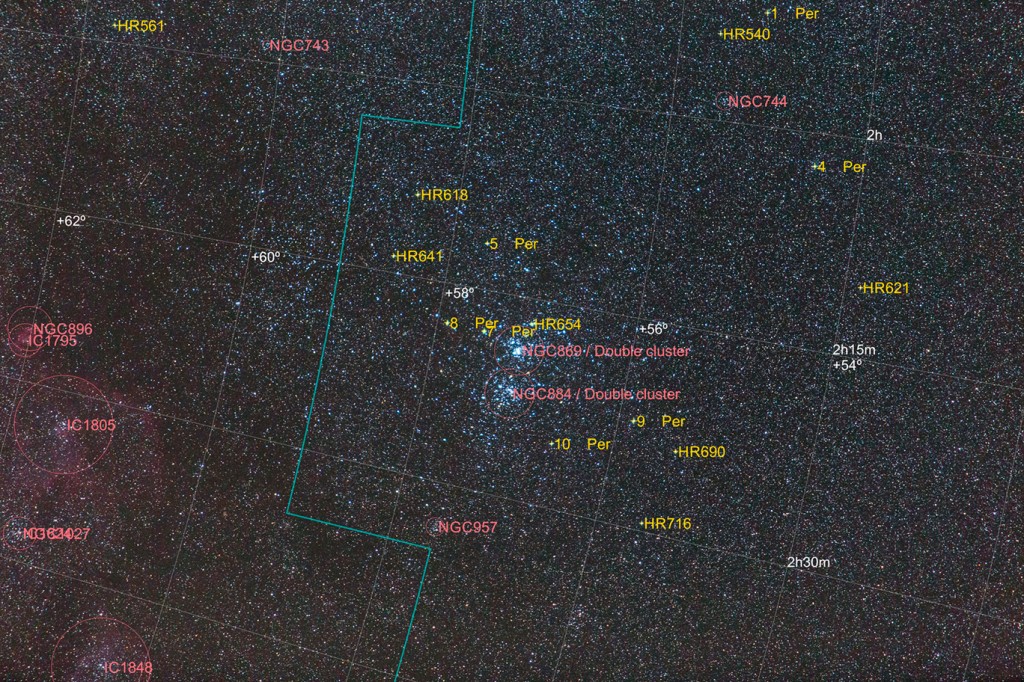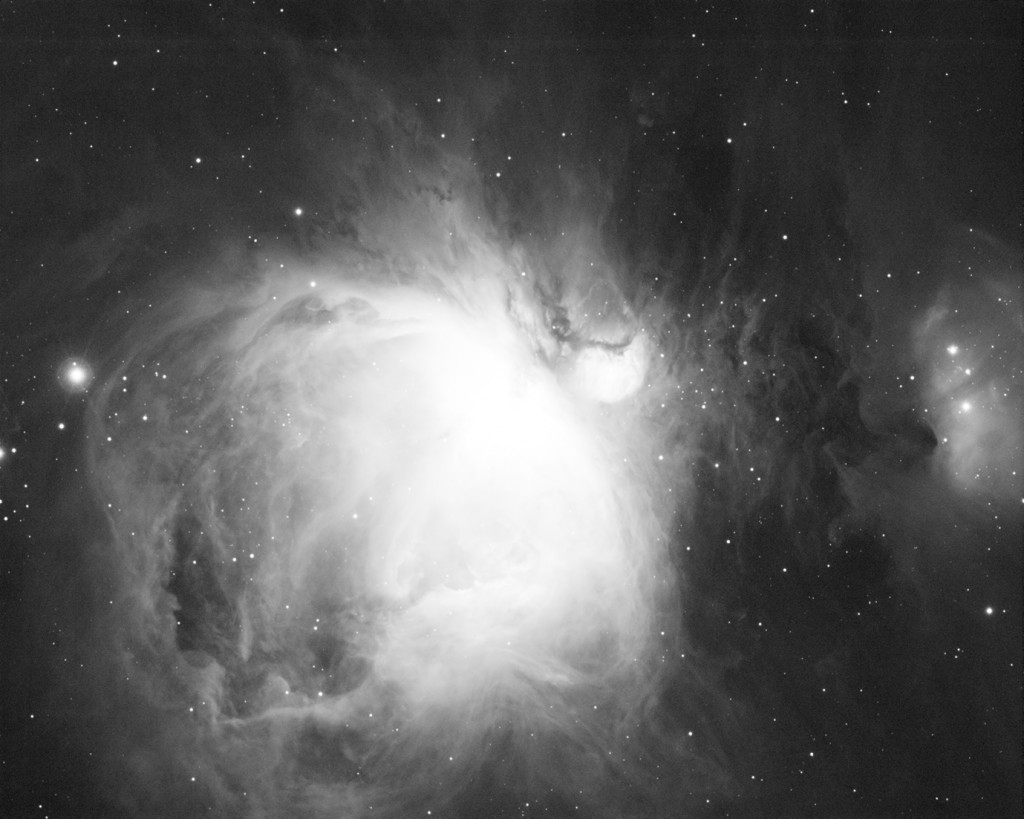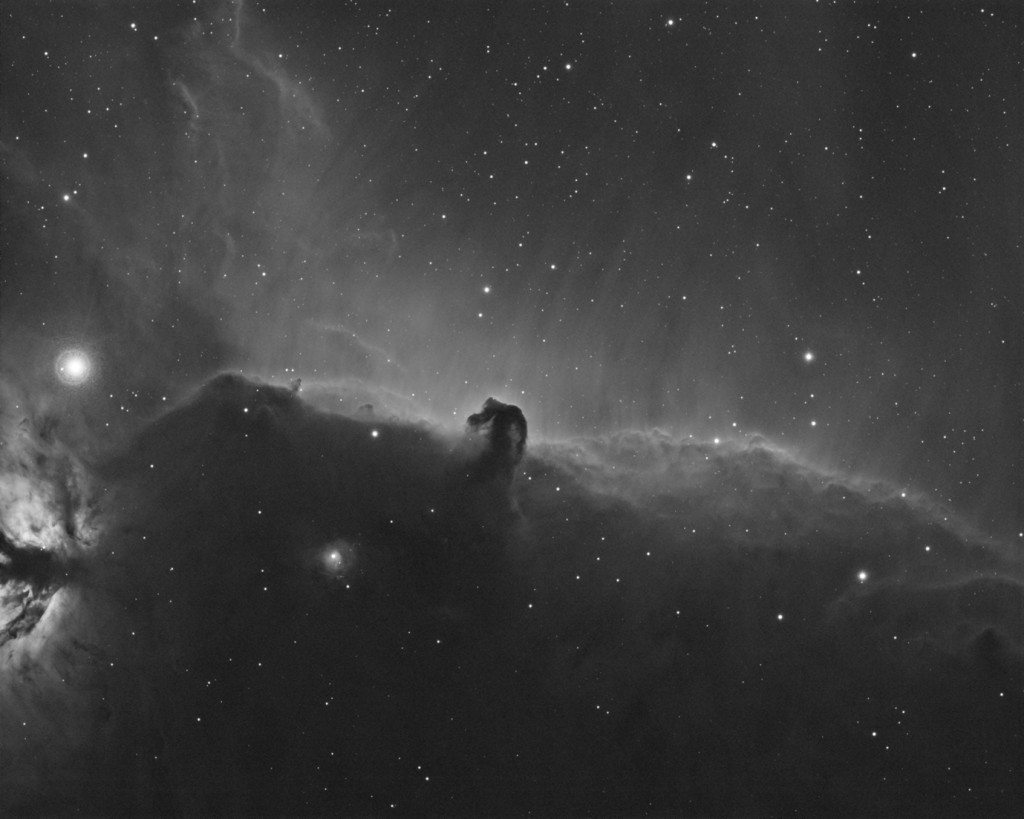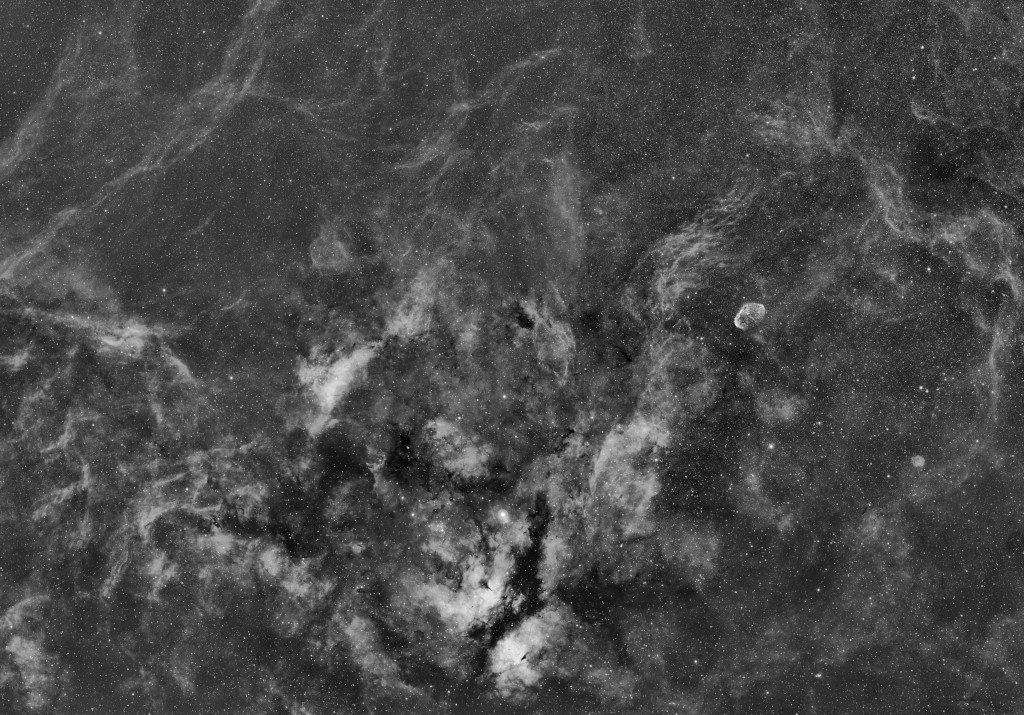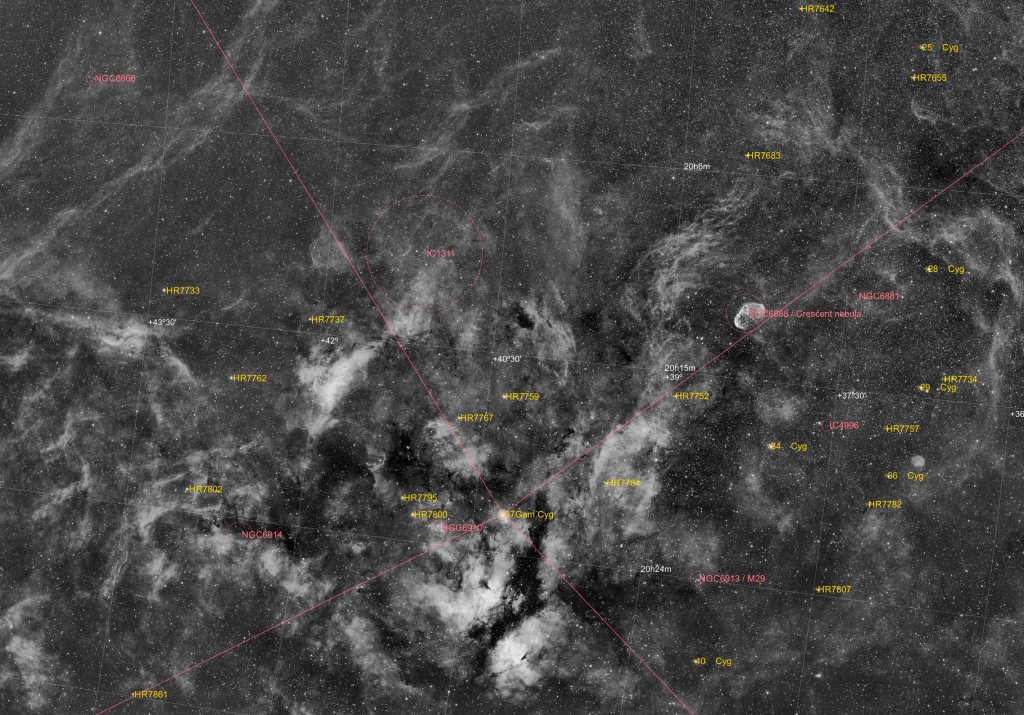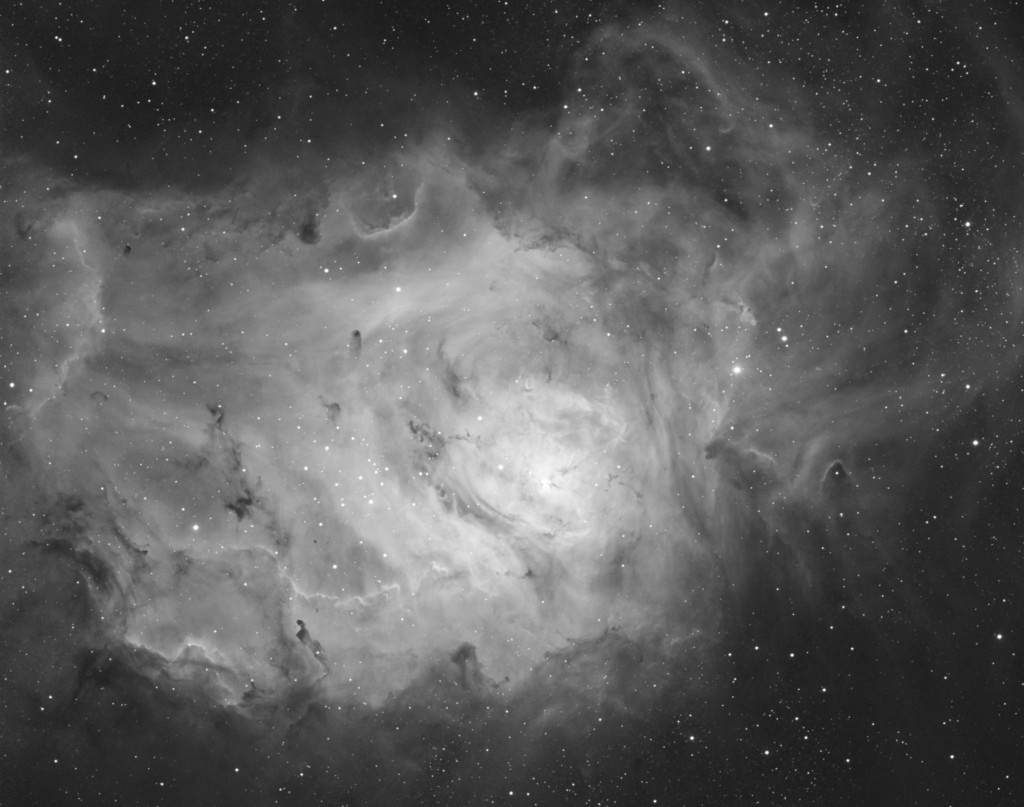
M8 – The Lagoon
Atlas EQ-G
Stellarvue SVQ100, Apogee Ascent A694
8x20min through a Baader Ha 7nm filter.
The Lagoon Nebula (catalogued as Messier 8 or M8, and as NGC 6523) is a giant interstellar cloud in the constellation Sagittarius. It is classified as an emission nebula and as a H II region.
The Lagoon Nebula was discovered by Giovanni Hodierna before 1654[4] and is one of only two star-forming nebulae faintly visible to the naked eye from mid-northern latitudes. Seen with binoculars, it appears as a distinct oval cloudlike patch with a definite core. In the foreground is the open cluster NGC 6530.
From Wikipedia, the free encyclopedia
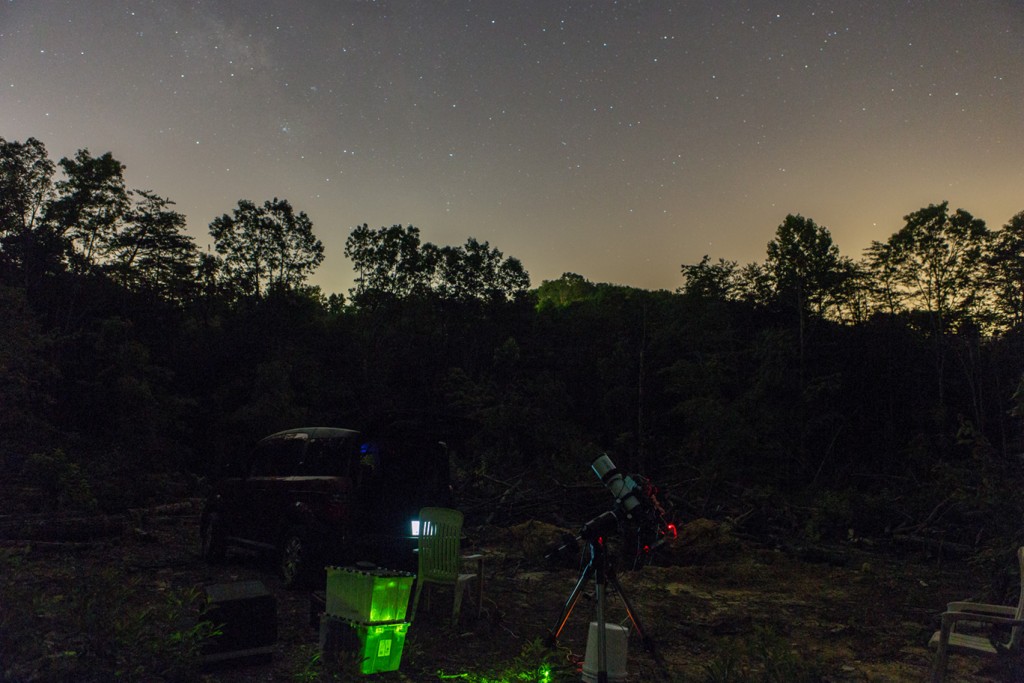
Future home observatory site looking south. The faint open cluster appearing on the left is M7 in Scorpius. Taken with a Canon 6D and 24-70mm f/2.8 at 24mm and f/4 for 20 sec at 1600 ISO.
Conditions were decent up until some clouds rolled in around 3:00am. There was a lot of lightning flashing to the north so I packed up a little early and headed back to the house. SQM measurements started around 20.2 but improved to 20.4 with a max of 20.5 around 1:00am.
The light pollution domes seen in the image are Oak Ridge to the south west (right side) and Clinton to the east/south east (left side).
![Cygnus Mosaic Cropped & Reduced to 50% Size. 9 Panels, 1x20min per Ha, O[III], S[II] Channel per panel. Total Time 9 hours. Taken with an Apogee U16M and Tak FSQ-106ED.](http://www.celestial-imaging.com/wp-content/uploads/2015/05/Cygnus-Mosaic-20150531_V2-1024x582.jpg)
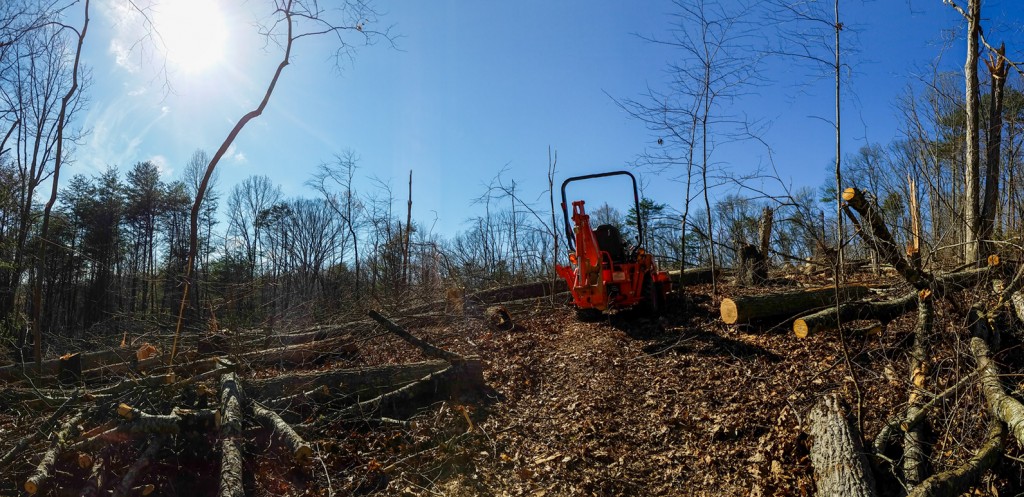
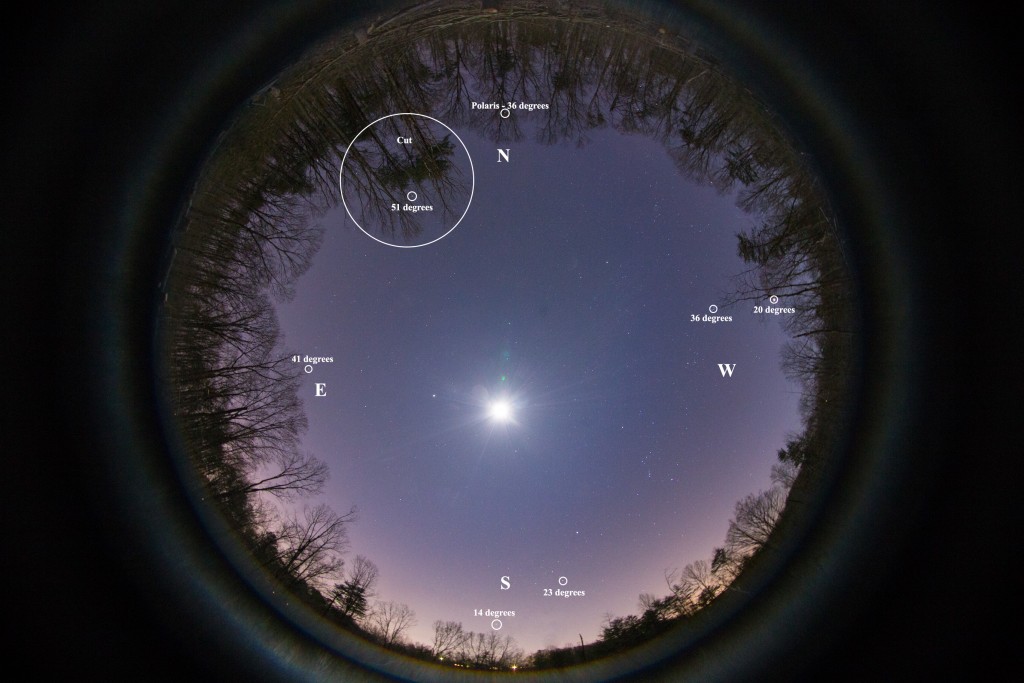
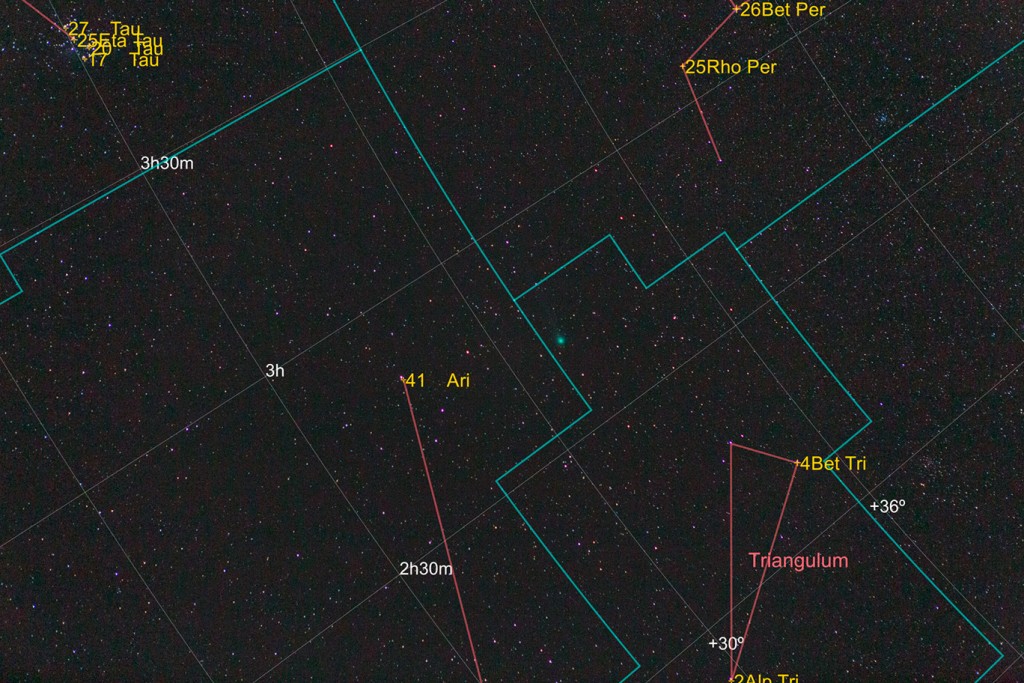
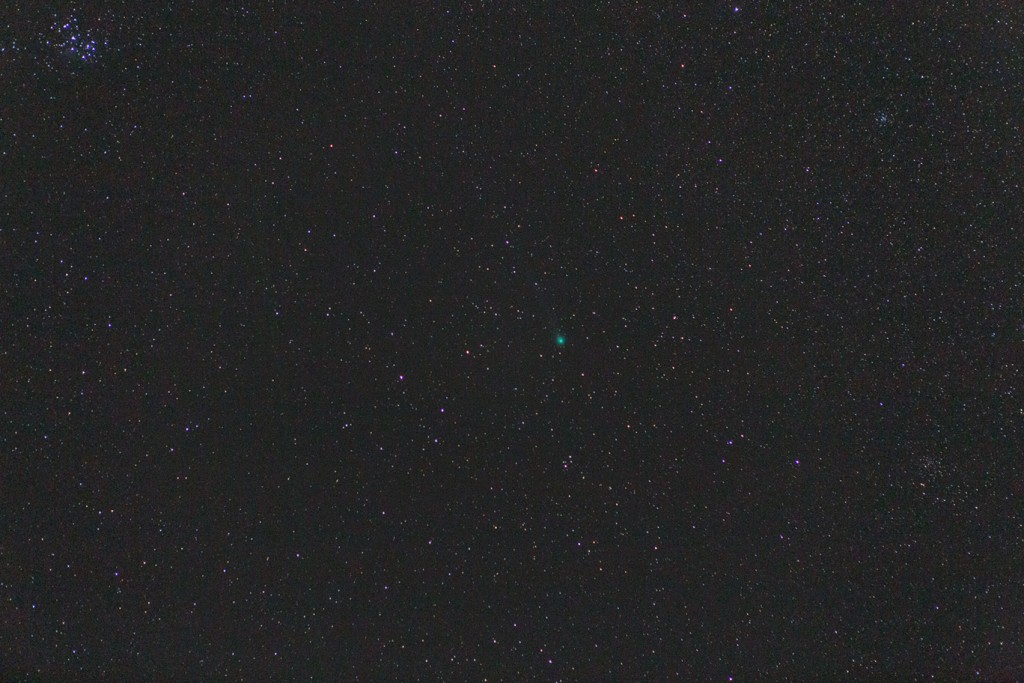
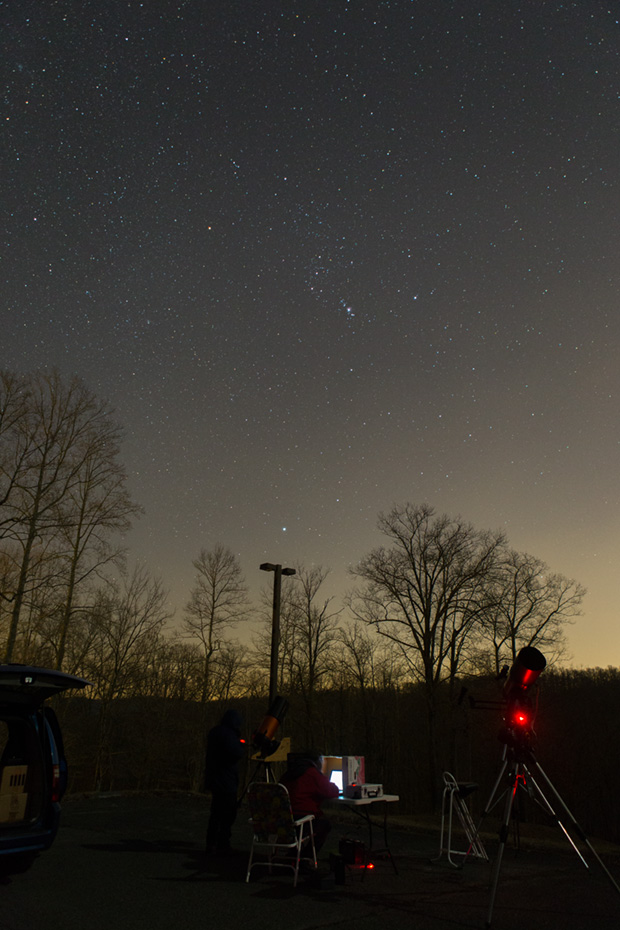
![The Rosette Nebula: Apogee U8300 CCD, Stellarvue SVQ100 APO, Atlas EQ-G, Astrodon 3nm Filters, 6x20min each Ha, O[III], S[II].](http://www.celestial-imaging.com/wp-content/uploads/2015/01/Rosette-Stack-Hubble-2-1024x819.jpg)
